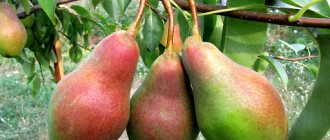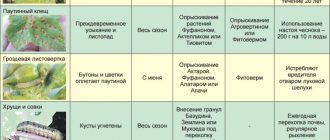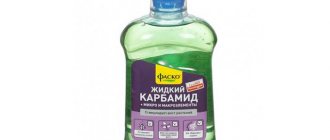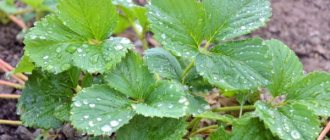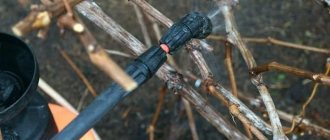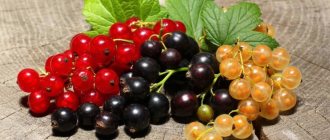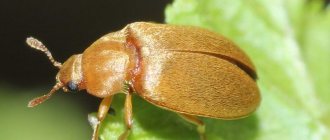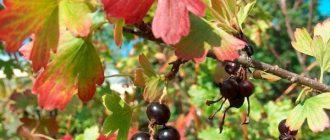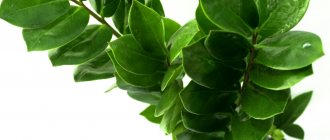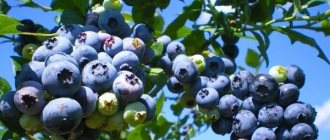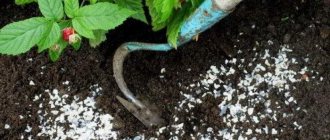Author: Natalya Category: Plant Diseases Published: June 14, 2018Republished: February 15, 2019Last edits: July 22, 2020
- Septoria of apple and pear
- Septoria of wheat
Septoria, or white spot , is one of the most common fungal diseases that affects both cultivated and wild plants. It is characterized primarily by the appearance on the leaves of the plant of light spots with a dark border.
Septoria disease - description
The causative agents of white spotting are fungi of the genus Septoria. This disease, caused by the fungi Septoria graminum, Septoria tritici and Septoria nodorum, can often be observed on cereal plants, and both septoria blight of winter and spring crops is known. Tomatoes are affected by Septoria lycopersici, gooseberries and currants by Septoria ribis. Also known are septoria of soybeans, white spot of hemp, septoria of grapes and many other plants, including root crops (septoria of carrots) and ornamental crops, for example, septoria of anthurium, which is a houseplant, and septoria of phlox growing in open ground. The first signs of the disease are spots on the leaves. They are usually light-colored with a darker border, but can be grey-brown or yellow, and the border around them may be yellow. The spots gradually grow, merge, occupy almost the entire surface of the leaf blade, and black dots of fungal pycnidia appear in their center. The successful development of septoria leads to the fact that the leaves of the plant dry out and fall off prematurely, the stems wrinkle, turn brown and bend, the bark on the trees dies, and the tops of the shoots dry out. As a result of the fall of a significant part of the leaves in plants, physiological processes are disrupted, flowering occurs weakly, with deviations, new buds are not formed, the plant’s immunity weakens, and they become easy prey for other diseases. Septoria disease progresses in conditions of high humidity at a temperature of 20-25 ºC.
Fighting septoria
Measures to combat septoria
In order to defeat the disease, it is necessary to apply all possible measures to influence septoria, including preventive ones. The fight against pathogens of septoria is carried out with fungicides, of which there are a lot today, and gardeners who are categorically opposed to treating plants with chemicals can resort to less toxic folk remedies that do not cause adverse reactions in the form of chemical burns of leaves and do not accumulate in fruits. However, with severe damage, it is unlikely that it will be possible to avoid the use of industrial fungicides.
In the photo: Septoria on plant leaves
Septoria disease - prevention
Everyone knows the time-tested truth: it is easier to prevent a disease than to cure it. That is why the key to success in the fight against any disease is its prevention. Preventive measures include compliance with crop farming practices, collection and disposal of fallen leaves and fruits, pruning of diseased shoots while capturing healthy tissue, treating cuts with garden varnish with the addition of a fungicide, digging up the soil under the plant and preventive treatment of plants with fungicide solutions, the concentration of which is much weaker than the therapeutic one. solution. Under the right growing conditions and proper care, plants with strong immunity can resist any infection, and diseases usually affect unkempt and weakened specimens.
- Apple tree: diseases and pests and their control
Prevention
Septoria and chlorosis begin to be treated in early spring, especially if the winter was short, warm and not particularly snowy. Spring is also an ideal time to prevent infections.
Regularly inspect the bushes in the area, paying special attention to weak bushes, since the fungus loves them most. Also in the risk zone of planting, without supports, which lack fertilizers, lighting, and oxygen. Make sure that the soil under the bushes is sufficiently moist, but not overwatered - both swampiness and drought are equally bad (but the fungus loves moisture most of all).
Also, for the purpose of prevention, you can apply foliar fertilizers with manganese sulfur a couple of times a year - first before the bushes bloom, then when you harvest.
A month after picking the berries, fertilize the plantings with a solution of potassium salt at a concentration of 1%. Find out about the best varieties of blackcurrant at this link.
Prevention of septoria is an important stage in currant care. Of course, it will not give you a guarantee of protection from infection, but it will reduce the risks significantly and strengthen the immunity of the crops.
Treatment of septoria of fruit and berry crops
Septoria of apple and pear
Septoria leaf blight on pear and apple trees appears as small light brown spots, which gradually become gray, as if surrounded by a dark rim. As the disease develops, the leaves turn yellow early, become covered with necrosis, dry out and die. The consequence of white spotting is a decrease in the viability, winter hardiness and productivity of fruit trees. The disease is rare on apple trees, but pear septoria is a more common occurrence. The pathogen that causes the disease overwinters on fallen leaves, and in the spring, during rains, plants are massively infected with its conidia. Warm, humid weather promotes the development of septoria on apple and pear trees.
As a rule, trees are not specially treated against septoria. Its development is inhibited by drugs used for scab, which are used annually to regularly treat the garden before buds open, immediately after flowering, and then 2-3 weeks later: a seven percent urea solution, a one percent solution of Nitrophen or Bordeaux mixture, a two percent copper solution or a five percent solution iron sulfate. In the fight against septoria, they also resort to the preventive measures we have already described. For those who are just planning to plant pear or apple trees, we recommend growing varieties that are resistant to scab and septoria. Today, purchasing seedlings of such varieties is not a problem. For example, apple trees of the varieties Bessemyanka Michurinskaya, Uelsi, Young Naturalist, Pobeditel, Cinnamon novoe, Zhigulevskoe, Autumn Joy and others. Of the pears, those that are almost not affected by septoria and scab are Winter Deccan, Doctor Geyo, Angoulême Duquessa, and Hardie's Butterwort.
Septoria currant and gooseberry
White spot also develops on related berry bushes - currants and gooseberries. Brown round or angular spots with a diameter of only 2-3 mm appear on the leaves of these plants, especially in dense plantings. Gradually they lighten, only the border around them remains dark. Spots may also appear on berries. If the infection is severe, the leaves will fall off. It should be said that red currants are affected by white spot to a lesser extent than gooseberries and black currants.
Treating bushes and soil in early spring, before buds begin to bloom, with a one percent solution of Nitrofen or copper sulfate helps prevent infection. If the disease has already manifested itself, destroy the infection with one percent Bordeaux mixture, colloidal sulfur or solutions of fungicides - Homecin, Captan, Fthalan - prepared in accordance with the instructions. Repeated spraying is carried out 10 days after harvesting. In autumn, leaves from under the bushes are raked out and burned to destroy any remaining infection, and the soil around the plants is dug up in late autumn and early spring. During the growing season, keep the tree trunks clean and do not allow weeds to grow under the bushes.
Septoria raspberry
Septoria blight, caused by the pathogen Septoria rubi, can settle on raspberries, appearing as round brown spots on the leaves, reaching 2-3 mm in diameter. Gradually they turn white, but by autumn, if the disease is not dealt with, large brown spots appear on the raspberry stems, not only gradually turning white, but also cracking. A sick plant overwinters worse. In spring, the disease begins to develop even more intensely. As a result, raspberry leaves fall off prematurely, and the bushes bear fruit worse.
In the photo: Septoria spots on leaves
If you are diagnosed with septoria disease during the season, do not expect it to go away on its own. Be sure to collect and burn all plant debris in the raspberry patch in late autumn, and dig up the soil between the bushes. Next spring, before sap flow begins, treat the bush and soil with a three percent Bordeaux mixture, and before flowering and after harvesting, treat it with a one percent solution of the same preparation.
- Bacterial diseases of indoor plants (part 2)
Pear pests
Diseases and pests of pear can cause serious harm to the plant. Various kinds of insects weaken the tree’s immunity and expose wounds, which leads to rapid infection with bacteria and fungal spores. Therefore, pest control is no less important than infection control.
Gall mite
This pest is located on the upper side of the leaf, sucking nutrients from it. Mite colonies are red or light green swellings. After some time, these lesions turn black and dry out. For the winter, mites hide in the buds, and during the summer season they are able to increase their numbers several times, which leads to damage to new areas of the plant.
If the pest has spread greatly, this will result in drying out of the buds, cessation of shoot growth, and decreased immunity.
They destroy pear pests on the leaves immediately after buds open. Processing is also carried out in the autumn, when the entire harvest has already been harvested. The drugs Fufanon, Kemifos, Carbofox are suitable.
Green aphid
A sucking insect that migrates during the process of reproduction. These greenish-brown insects move from pear trees to umbrella plants in spring or early summer, and in the fall, having increased their numbers, they return to the tree. The symptoms are difficult to confuse with the effects of other types of aphids; in this case, young foliage stops developing and folds in half along the central vein.
If the number of aphids is large, the leaves dry out. At the end of the season, the pest is located on the lower part of the leaf blade, where it sucks the juice. The affected areas appear as orange spots. If you want to know what to spray a pear against pests, you won’t have to look for an answer for long. Almost all known insects are destroyed by one set of drugs: Fufanon, Kemifos, Iskra, Actelik and other analogues.
Pear psyllid
Also belongs to the class of sucking insects. The psyllid has a brown body and opaque wings folded on its back. The pest survives winter frosts in the bark and under fallen leaves. With the arrival of warmth, they begin to suck the juice from the buds, after which they lay eggs on branches and young shoots. When the leaves have already blossomed, oviposition continues along the central vein.
During the development process, the larvae drink juice from the leaf, stem of the peduncle, shoot and even the fruit. At the same time, honeydew is released, which, when it reaches a sufficient amount, completely covers the larva, thereby preventing the negative effects of environmental factors. About 4-5 generations can grow in one season. An increase in numbers leads to the appearance of sooty fungus, which, in turn, requires the use of certain drugs against pear diseases.
Without treatment, the tree’s development slows down, its yield decreases or completely disappears, and its frost resistance weakens. For control, the same means are used as for aphids.
leaf roller aphid
A small insect that sucks sap from a plant. The body of this species of aphid is dark green or yellow-green. Its larvae are dark green, 0.5 mm in size. In winter, eggs are laid near the buds; they are black and shiny. With the onset of heat, the pest attacks the buds, then moves on to the leaves and shoots. Damaged foliage curls along the central vein, where many insects accumulate, which are covered with a sticky substance.
The leaf roller aphid reproduces quickly; 10-15 generations are born in one season. When there are large numbers of insects, they completely cover the shoots, and sticky secretions flow to the ground and along the trunk. At the same time, the growth of damaged branches stops, the formation of fruit buds is absent, and the trees do not tolerate frost well.
The fight comes down to spraying with the following products: Fufanon, Kemifos, Aktelik, Iskra and the like.
Septoria on other crops
Septoria of wheat
The peak development of septoria on wheat is observed during the grain filling period in conditions when the temperature is between 14-22 ºC and humidity reaches 90%. White spot affects the leaves, ears and stems of wheat, on which long spots of different shades of yellow and brown form. Rainy weather contributes to the development and spread of infection. Septoria head blight of wheat leads to the fact that the inflorescence becomes brown or variegated, underdeveloped and even sterile. Protection of wheat from septoria blight is carried out primarily by agrotechnical methods: growing disease-resistant varieties, correct application of fertilizers, compliance with crop rotation, timely sowing of high-quality and healthy grain in disinfected soil. Harvesting must be followed by stubble peeling and subsequent fall plowing. Crops that are easily affected by white spot should not be grown near wheat.
Septoria barley
On barley, septoria appears in the second half of the growing season, although there have been cases when it developed even on seedlings. The signs of white spot on barley are the same as on wheat, since the disease is caused by the same fungi: not only leaf spotting can be observed, but also septoria of the ear and stems. The disease can only be combated on grain crops using preventive methods, which we described in the previous section.
Sunflower septoria
Signs of septoria on sunflower appear first on the cotyledons, then round, irregularly shaped yellow spots, subsequently browning spots spread over the lower leaves of the plant, and then appear on the upper ones. Spots on the upper side of the leaf blade are surrounded by a light border, and those that form on the lower side are surrounded by a light gray rim. Gradually, the tissue inside the spots dies and falls out, and holes form in the leaves. In some cases, the disease appears on the stems and even on the baskets of sunflowers. Unfortunately, Septoria blight on sunflower can only be controlled by preventive measures, namely the agrotechnical methods described in the section on Septoria blight on wheat.
In the photo: Septoria disease on tomatoes
Septoria of tomatoes
White spot also affects garden crops, such as tomatoes, and open ground plants are more likely to suffer from the disease. Of course, seedlings can also get sick; greenhouse tomatoes are not immune to white spotting, but in closed ground conditions it is easier to fight the disease, since it occurs in the form of outbreaks.
First of all, septoria blight appears on old leaves as small dark spots saturated with moisture, less often on fruits, petioles and sepals. The spots grow, reaching a diameter of 5 mm, a dark border appears around them, and the center becomes lighter. Affected leaves turn yellow and die, and this can delay the development of the plant, since it has to spend some of the plastic substances on the formation of new leaves. There were years when, due to white spotting, tomato yield losses amounted to 40-50%.
When the first signs of the disease appear, the plants are treated with Bordeaux mixture or its substitutes - the preparations XOM or Oxyx, for example. The fungicides Title, Revus and Thanos have proven themselves well in the fight against white spot. However, as we have said more than once, the most reliable protection of plants from fungal diseases is prevention, namely:
- destruction of plant residues and deep digging of the site in the fall;
- maintaining spatial isolation of tomatoes from other crops, especially those that are easily affected by fungi;
- timely disinfection of greenhouses, greenhouses, garden tools, soil and seed or planting material;
- strict adherence to planting schemes that provide air access to each plant.
And most importantly, try to grow tomato varieties that are resistant to septoria: Platus, Mondial, Horeb, Joker, Worthy, Ballad, Amico, Golden Fleece and others.
- Cucumbers: diseases and their treatment
Septoria hydrangea
Septoria leaf blight can also appear on ornamental shrubs. For example, on hydrangeas. Brown spots up to 5 mm in diameter suddenly appear on the leaves of the plant. The affected leaves fall off over time, the plant loses its attractiveness, and the disease spreads to young shoots. It is better to cut off organs affected by white spot, capturing a few centimeters of healthy tissue, and the plant should be treated with Profit, Bordeaux mixture or other copper-containing preparation. In the fall, rake from under the diseased bush and burn all the leaves and other plant debris, treat the hydrangea and the soil under it with a one percent solution of Bordeaux mixture and dig up the soil in the tree trunk circle. In early spring, before the sap begins to flow, repeat the treatment of hydrangea with Bordeaux mixture.
Preparations for septoria (fungicides)
The following drugs are effective in the fight against white spotting:
- Hom is a copper-containing fungicide with systemic-local action to combat fungal diseases - scab, septoria, late blight, peronospora and others;
- Oxychom is a systemic contact copper-containing fungicide with a broad spectrum of action used to combat fungal diseases;
- Copper sulfate is a broad-spectrum contact fungicide intended to combat fungal diseases of fruit, berry, and ornamental crops;
- Iron sulfate is a remedy used for the prevention and treatment of fungal diseases;
- Bordeaux mixture is a copper-containing broad-spectrum fungicide to protect vegetable, fruit, berry, citrus, melon, ornamental and flower crops from a range of diseases;
- Profit is a contact fungicide to combat Alternaria, Septoria, late blight and other fungal diseases;
- Nitrophen is a drug for the destruction of fungal, mold and parasitic infections, inhibiting the growth of weeds and disinfecting the soil;
- Khomecin is a protective contact fungicide recommended for treating plants during the growing season;
- Captan is a fungicide with therapeutic and preventive action, a substitute for Bordeaux mixture;
- Fthalan is a fungicide with a wider spectrum of action than Captan.
To combat septoria, the drugs Acrobat MC, Previkur, Ridomil Gold MC, Fundazol, Skor, Ordan are also used, and for preventive treatments, Rovral, Trichodermin and Glyokladin are used, preparing solutions in accordance with the manufacturer's instructions.
conclusions
- To minimize the risk of septoria blight, grow currant varieties that have the highest level of resistance to anthracnose.
- In autumn and during the growing season, regularly collect affected, fallen leaves and burn them. It is also necessary to spray currants in spring and autumn with solutions of copper sulfate and other preparations. Make sure that the plantings do not experience either an excess or lack of nutrients.
- You can replace chemicals with folk remedies, but keep in mind that in case of significant damage, gentle substances are simply powerless.
- The main friend of septoria is high humidity. Try to prevent it, and if nothing can be done (rainy season), pay maximum attention to prevention. Overwatering currants is not safe for both its roots and fungal infection.
- There are no currant varieties that are 100% resistant to the disease.
This article will tell you about bush holders for currants.
